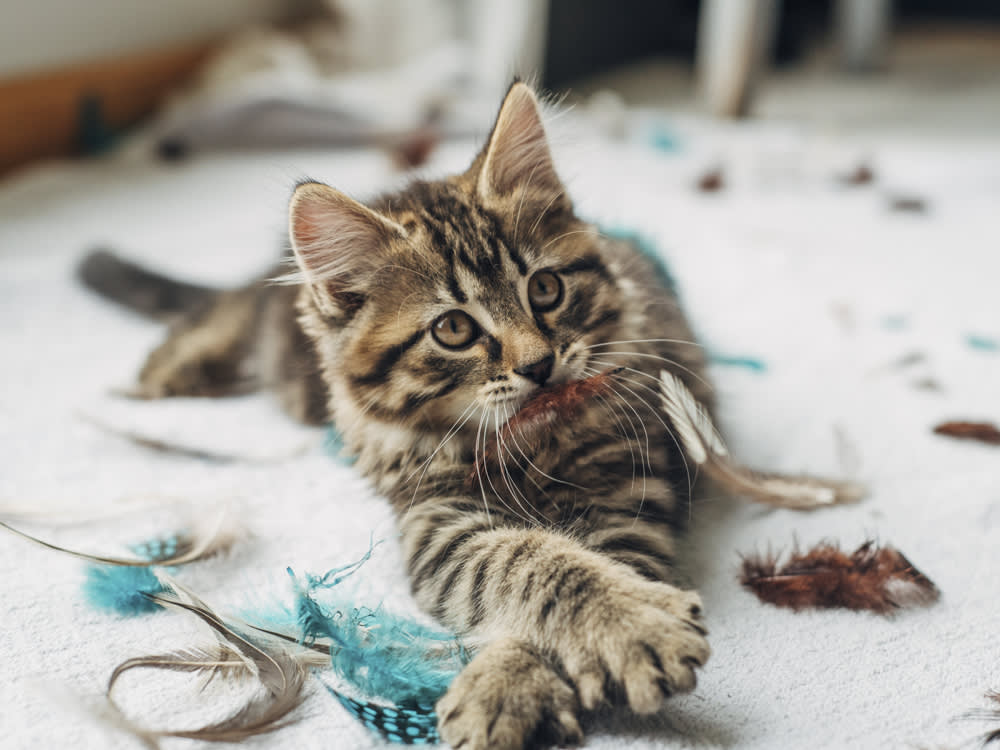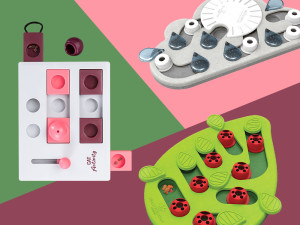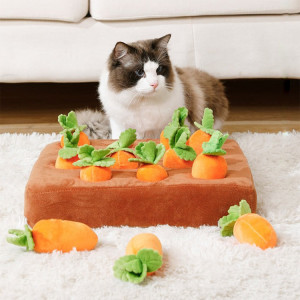Not All Cat Toys Are Created Equal
Here are the toys that will motivate your pet to get in the game.
Ever wondered why your cat seems offended by a felt mouse offering, but will ambush a feathered lure like a tiger shark? The best of us have questionable tastes (pineapple on pizza!) but if you’re bewildered by your cat’s toy preferences, you’re not alone. While we’ve already had experts establish that cats are picky — picky about their food, their litter, their litter boxes — The Wildest asked Mikel Delgado, PhD, a certified cat behaviorist, to point us in the right direction at the pet store.
Anyone who has had a cat understands the delicate balance that cats are able to strike between sleeping in adorable positions for three quarters of the day and pouncing on your head when they’ve declared nap time over. Far from their ancestors who didn’t enjoy the luxury of being served dinner in an elevated, ergonomic bowl, modern house cats don’t need to access their hunting instincts as often. But that’s not to say they don’t want to. Per Delgado, “All cats have the instinct to hunt, and play behavior is an expression of their hunting instincts, just directed towards toys instead of prey.”
In general, our pets prefer stimulating cat toys: small objects that resemble prey and are easy to bat around. “If you think about play as an extension of hunting behavior, then it makes sense that cats would prefer toys that resemble prey animals in different ways,” Delgado says. “That might mean toys that move easily when touched, toys that have fur or other interesting textures, [toys that] have tails or that appear to look like a bird or a mouse.”
Most cats respond more to interactive toys or to toys attached to a wand that we can manipulate to move in ways prey naturally do in the wild. On the other hand, toys that play dead, like felt mice, don’t stimulate cats’ stalking instincts. “Felt mice are inanimate, and while kittens and very playful cats might be interested in them, they are essentially dead and other cats will lose interest quickly.”
Nearly all cats, though, are interested in noises both inside and outside the home. “Certain sounds, such as rustling noises, and movement are attractive to cats and often instigate stalking behavior,” Delgado adds. “But some robotic toys can be a little awkward or loud and scary to cats.”
Age, health, activity level, and personal preference also factor in. “Cats can have personal preferences about what types of toys they like to play with,” Delgado says. For example, if your cat is a bit older, less energetic, and possibly arthritic, then they won’t likely be tempted by a feathered wand.
And then there are cats who prefer “to play with household objects like paper balls and toilet paper rolls, even if those things aren’t really cat toys.” If your cat can’t be converted into a #floppyfishopens in new tab fan, at least you can cut back on your cat toy budget by upcycling your TP. Or, you could always cheat and sprinkle come catnip on (or stuff inside) any toys that you’re not ready to give up on yet.





